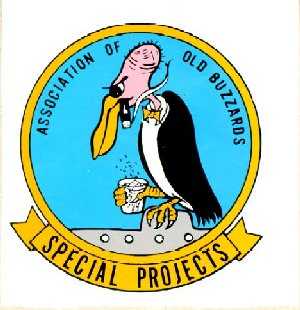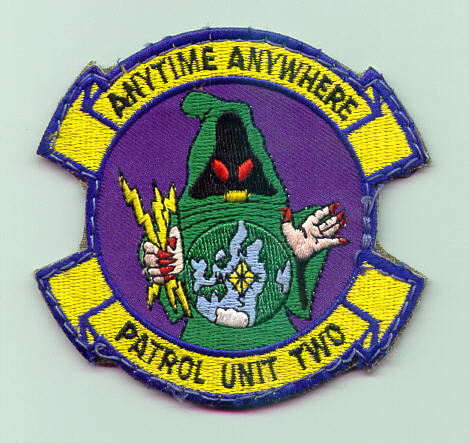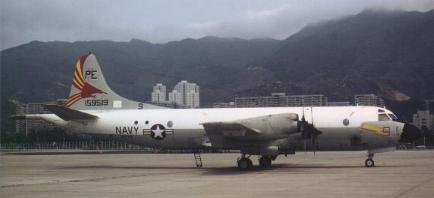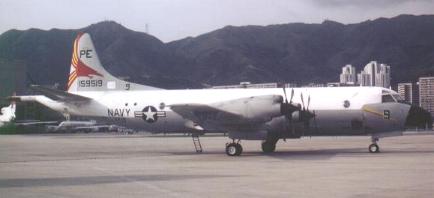
Captured web page. P-3 Orion Research Group
Patrol Squadron Special Projects Units
last updated: 8 march 1999
DISCLAIMER:
"The photos and information presented on this page are the result of free gathering of news and are not to be considered as official expressions by military authorities. Opinions expressed by the webmaster (source provider ) are his own"



Pay attention to the 8 March 1999 issue of "Aviation Week & Space Technology" (page 32). An interesting story by David A. Fulghum describes the VPU squadrons, their aircraft end their missions:
The opening paragraph reads:
"For well over a decade, the U.S. Navy has been operating two small squadrons of what appear to be innocuous P-3 patrol aircraft but in fact are state-of-the-art sentinels packed with a multitude of classified sensors." Highlights of the article include:
The squadrons involved are designated VPU-1 (the Old Buzzards) based in Brunswick, Maine, and VPU-2 (the Wizards) based at Barbers Point Hawaii. Both squadrons operate a stripped UP-3A aircraft for logistical and training use. The former operates (E)P-3Bs and the latter operates (E)P-3Cs. These aircraft carry the "most sophisticated optical, electronic, infared and chemical reconnaissance equipment," probably installed at facilities in Garland and Greenville, Texas formerly operated by E-Systems, now operated by Raytheon. Code names "Reef Point" and "Storm Jib" were used in the past, but those names have almost certainly been replaced. While these aircraft are often painted in the false colors of other squadrons, they can be identified by the fact that the sonobuoy chutes are painted on (vice being real holes) and by the optical sensors visible behind the fuselage blister windows. Currently budgeting calls for replacing two Bravo models with two Charlie models in the near future.
The VPU missions are similar to those performed by the different variants of the USAF RC-135 series of aircraft: collecting all manner of emissions across a "wide swath of the electromagnetic spectrum." While the targets have in the past included Russian naval vessels at sea, currently the VPU squadrons have focused their collection efforts on targets such as forces in Bosnia, in the Spratly Islands, in Iraq and in Somalia. This tasking requires VPU aircrews to spend an average of 220 days per year deployed. There appears to be frequent transfer of personnel from the VPU community to the VQ community and vice versa. In addition, equipment proven by the VPU community often trickles down into the VP community -- one example being a long-range electro-optical visual surveillance system.

"159519" at Kai Tak, 3 April 1986 (photo: The Nullah Lads)

Another "159519" at Kai Tak, 1 July 1986 (photo: The Nullah Lads)
A P-3C with BuNo "159519" never excisted; in fact this BuNo belongs to an Israeli A-4 Skyhawk! Also the aircraft on the first photo is not the same one as the aircraft on the second photo. Note the difference in the VP-19 tail markings and the presentation of the "9" and the flash on the nose!! The two small windows on the rear fuselage are not real, but are painted on the fuselage in order to make these VPU-2 P-3B Orions look like a VP-19 P-3C....
"158218": another disguished P-3B of VPU-2 at Kai Tak, December 1986 (photo: The Nullah Lads)
Given the fact that the bogus windows on the second "159519" and on the "158218" are of the same size and at the same position, these aircraft might very well be one and the same. The constructionnumbers and the rework dates (presented in the data block below the vertical stabilizer) were helpful facts in identifying the first "159519" as P-3B 154585, while both the second "159519" and "158218" were identified as 154584. Both aircraft were known as "specially equipped" P-3B Orions assigned to VPU-2.
"161014" on take off from RNLNAS Valkenburg, 17 July 1987 (photo: Marco P.J. Borst)
The first VPU-1 bird known to have been in The Netherlands is this P-3B. Again, the aircraft is disguised to appear to be a P-3C. BuNo "161014" was painted below the horizontal stabilizers but if this really was the aircraft they made it look like it would have had the usual ten SRS aerials that are on the real 161014... The windows in the rear fuselage are not real, but painted on and so are the sonobuoy launch tubes below the fuselage (not clearly visible on this photo). Extra aerials below the rear fuselage and the square window in the flightdeck emergency hatch on the left side of this Orion make this a VPU bird for sure.
A more recent photo of a VPU-1 aircraft ("316") at RAF Mildenhall, 7 March 1998 (photo: Dougie Couch)
With the VPUīs operating P-3C Orions these days there is no need for them to do a lot of paintwork in order to make their aircraft look like other variants. This "316" shows a flat optical window (for an Electro Optical System) in the forward observation window position, missile warning receivers on the front and aft radomes and an extra "SATCOM-look alike" aerial on top of the fuselage (above the wing). Although these details can also be found on regular P-3Cs that went through the AIP modification, this particular aircraft is considered to be a VPU-1 bird, possibly BuNo 156509.
P-3C "889" at RAF Mildenhall, 11 January 1998 (photo: Team Mildenhall)
The USNīs P-3 inventory knows two aircraft with "889" as the last three digits of the BuNo. The first one is 148889, the second one is 159889. The plane that visited Mildenhall in January ī98 is definately a Charlie variant, but almost for sure it isnīt BuNo 159889; that particular Orion is assigned to VX-1 and this is one of a few squadrons that is not using the last three digits of the BuNo on the nose of its aircraft. Most important on this photo is the lack of a "doppler" bulge aerial below the aft fuselage (the real 159889 should have this) and the ESM pod below the right hand wing. Older photos of the real 159889 show that this Orion did not have such a system. The aircraft seen at Mildenhall featured the same details as on "316" so this might be VPU-1īs second "Reef Point" aircraft.
Two photos of an Orion with nose code 320. The right hand one was taken at RNLNAS Valkenburg on 21 June 1997 by Jaap Dubbeldam and is P-3C BuNo 159320/LC-320 of VP-8. The left hand one was supposed to be the same aircraft and that was how it appeared in the Valkenburg movements of 2 December 1998. It visited Valkenburg that day as "vvLD003" so most spotters assumed it was a VP-10 patrol plane. We found it a bit strange to believe that VP-10 aircraft were seen frequently in Europe (Aviano, Lakenheath, Mildenhall and Valkenburg) while other squadrons were taking care of the regular deployments at NAS Sigonella and NAS Keflavik so we did some research. By investigating the left hand photo of Orion "320" we discovered this could not be a P-3C NUD (non update) aircraft because it has the ten aerials that are typical for the Sonobuoy Reference System that was introduced on the Update II version of the P-3C. Therefore it is 100% sure that the aircraft on the photos above are not one and the same Orion!! We even managed to find out the real identity of the aircraft that visited Valkenburg on 2 December 1998: it was P-3C-II.3 BuNo 161122, an aircraft we believe to have been added to the fleet of VPU-1 in the third quarter of 1998.
This means that VPU aircraft are pretty active in the European theatre. Their aircraft usually take the identity of other P-3s and apparantly they have now started to make use of the callsigns of VP squadrons which are not in the neighbourhood (most likely to avoid misunderstandings during the operations). Late 1998 they frequently used VP-10īs "vvLDxxx" callsigns. Now that VP-10 has taken up residence at NAS Sigonella a trio of Orions (565/1 "vvLC565", 224/3 "vvLC224", 573/4 "vvLC573") showed up in Europe making use of VP-8 "vvLCxxx" callsigns. We assume these are the "new identities" for the aircraft of the VPU detachment in Europe.
VPU-1īs specially equipped P-3Bs at NAS Keflavik visit this impressive VPU photo gallery by Baldur Sveinsson. He saw and photographed many of these interesting birds in the past.